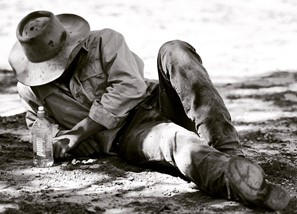
By Sue Jensen – Rural Aid Counsellor
Turn on the TV and the news coverage is all about Covid. For some parts of Australia, the transmission from the city to our rural communities has had folks worrying further about how their community might be impacted, how they might cope.
 Worrying is a natural response to uncertainty. As humans, we like to think ahead, anticipate obstacles or problems, and put in place solutions. But, when solutions aren’t available or we find ourselves in situations where we have little control, like a pandemic, we often become anxious or apprehensive. We may start to worry more, which can cloud our judgement and affect our concentration.
Worrying is a natural response to uncertainty. As humans, we like to think ahead, anticipate obstacles or problems, and put in place solutions. But, when solutions aren’t available or we find ourselves in situations where we have little control, like a pandemic, we often become anxious or apprehensive. We may start to worry more, which can cloud our judgement and affect our concentration.
When worrying gets of control, we can get stuck in the “worst case scenario” mindset. When our worry becomes excessive and it isn’t just in our heads, we feel it as anxiety in our bodies. It can feel like:
- Muscle tension or aches and pains
- Restlessness and an inability to relax
- Difficulty concentrating
- Difficulty sleeping
- Feeling easily fatigued
Anything can be a trigger for worry. Even when things are going well, you may find yourself worrying. Worries tend to fit into two categories: “real problem worries” and “hypothetical worries”.
So how do we manage worries?
Maintain a bit of balance between what you know you need to do on the farm, and things you may do for fun or pleasure. Not getting this balance quite right can affect how you feel. Not doing things you enjoy might have you feeling low and not catching up with those you care about can make you feel isolated.
Think about what you might have done today that gave me a sense of achievement? Pleasure? Closeness with others? Think about how you might increase these feelings tomorrow?
Humans are social animals. We need others to thrive and flourish. Think about creative ways you could do social things at a distance such as keeping in touch by giving someone a call, catching up online or meeting over the back fence.
Practise working out if your worry is a “real problem” worry or “hypothetical” worry. If you catch yourself worrying about hypothetical worries, remind yourself that your mind is not focusing on a problem that you can solve right now. Look for ways you can let the worry go and focus on those things you can control.
Postpone your worry – worry is insistent and can make you feel like you must engage with it “right now”! Try setting aside some time each day to let yourself worry (ie. 30 minutes at the end of each day) but allow the other 23.5 hours a day be “worry free”. If you notice you are starting to worry throughout the day, let go of the worry and keep it for ‘worry time’. It may seem an odd practise at first, but it allows you to manage your thoughts.
Finally, speak to yourself with compassion because worry often comes from a place of concern. Try and write down your worries so you can have a look at them or give mindfulness techniques such as focussing on your breathing a go.
To learn more tips around settling your worrying down, you can contact one of our Rural Aid Counsellor.
Sue Jensen, Counsellor & Community Representative

